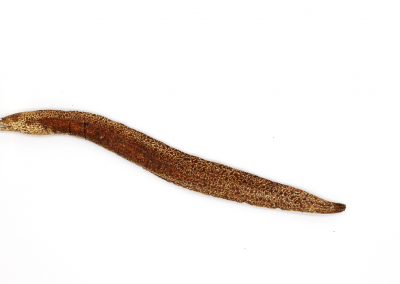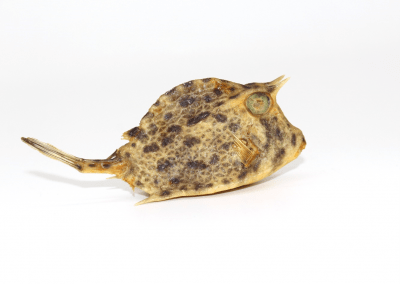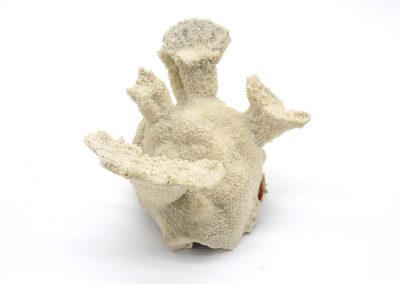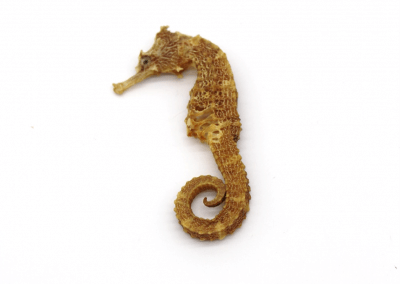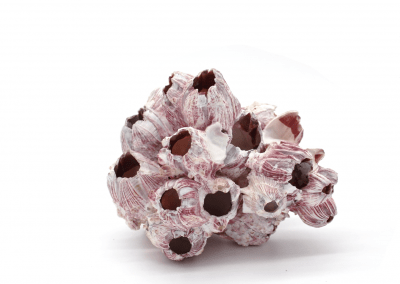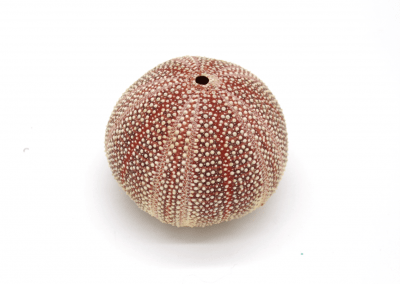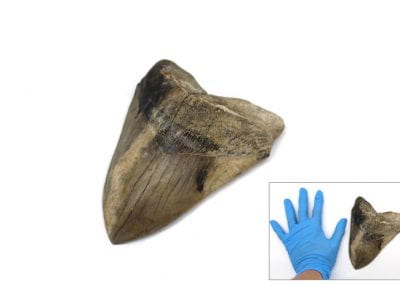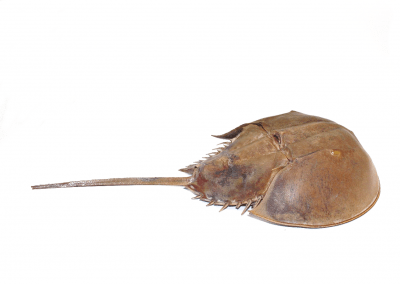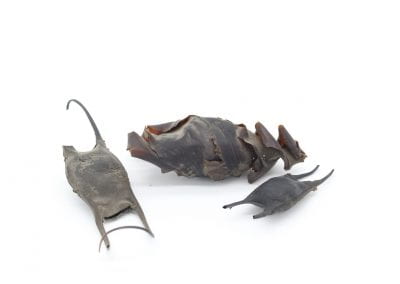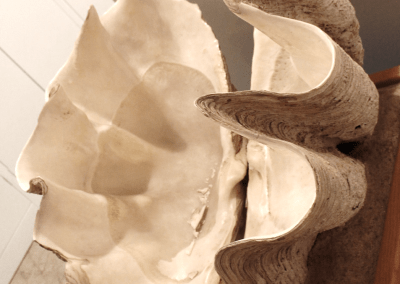Under the Sea: A Visual Collection of Oceanic Specimens
Zoological Collections
Meredith C. Swartwout, Ph.D. Candidate, Biological Sciences, U of A

Caption: A pod of dusky dolphins (Lagenorhynchus obscurus) swimming off the coast of Kaikoura, New Zealand. Photo by Meredith Swartwout.
The sea encompasses most of the earth’s surface and contains most of the planet’s water (in the form of saltwater). In terms of life, coral reefs have some of the most diverse communities on earth, while the open ocean is the equivalent of a desert. The sea and her mysteries have captivated people for centuries. Large expanses remain unexplored and new species are frequently discovered in the deep oceans. Even for people who are not biologists or explorers, the ocean still has allure, and every year people are drawn to beaches to enjoy the sand and saltwater.
The ocean takes up so much of the earth and human imagination so it should come as little surprise that even though Arkansas is a land-locked state in the U.S., the University of Arkansas Museum has a collection of marine life. I know many of us are stuck indoors right now, trying to keep our families safe, and many U.S. citizens may not have been able to do a yearly pilgrimage to the sea. Therefore, please allow us to bring the sea to you, with this visual sample of the diverse marine specimens that the museum has to offer.
Tip: Get a closer look at the images below by clicking on them!
Spotted Moray Eel
The Spotted Moray Eel (Gymnothorax moringa) is a relatively large eel species that can reach 6 ft long (though this specimen was only a little over 1 ft in length). Eels are a type of snake-like fish and moray eels tend to live solitary lifestyles hiding in crevices and caves in reefs.
Porcupinefish
Porcupinefish (Family Diodontidae) are famous for their defense strategy of puffing up into a ball by swallowing water or air when they are threatened. By making themselves spiky, round and large, they are more difficult for predators to eat and most larger fish will give up on trying to eat them.
Cowfish
This fish is a member of the Family Ostraciidae, likely a Cowfish, though the family also includes boxfish and trunkfish. They are common but strange-looking ocean fishes. Cowfish have “honeycomb”-like patterns on their skin and the two protruding “horns” over the eyes. These fishes have armored scales that are fused together, forming the box-like shape and making them nearly impossible for predators to eat.
Glass Sponge
This Glass Sponge (Euplectella speciousa) doesn’t look like how most people imagine sponges. In fact, its delicate lace-like structure, once dried, feels firm, almost like ceramic. The household sponges that people use for cleaning originally were made from soft sea sponges, but today our cleaning sponges are primarily synthetic. Did you know that sponges are the most primitive animal on Earth? They lack nervous systems, heads, and backbones but possess specialized cells that allow them to filter out and capture food particles from the seawater.
Moosehorn Coral
The Moosehorn Coral (Acropora palmata) is so named for its shape and structure. Coral reefs are one of the most diverse ecosystems on Earth and coral is arguably one of the most important animals in the ocean. Unfortunately, corals are in danger from climate change, pollution, and mechanical destruction due to human activities. Did you know that corals are closely related to jellyfish and sea anemones?
Seahorse
Despite its resemblance to our equine friends, the Seahorse is not a horse, in fact, but a bizarre fish. Seahorses don’t swim very fast. They live in sea grass or aquatic vegetation, using their prehensile tails to hold on to the plants, and rely on camouflage, mimicking the vegetation that they live in to avoid predators. In seahorses, males are the ones who guard and take care of the young and carry them in a pouch on their belly, much like a mama kangaroo.
Sea Stars
Sea stars come in a variety of shapes, sizes and forms. Although commonly called “starfish”, that’s a bit of a misnomer since sea stars are not fish at all, they are invertebrates in the Phylum Echinodermata. Despite their cute appearance, they are voracious predators of shellfish and can move surprisingly fast when on the hunt. One species of sea star, the Crown-of-Thorns, even eats coral.
Barnacle
Barnacles are a type of crustacean, but unlike crabs and lobsters they attach themselves to a surface and don’t move around once they are adults. They are filter-feeders and can survive drying out and sun exposure in the tidal zone. Barnacles frequently attach to ocean-going boats and there are even species of barnacles that attach to and live on baleen whales, such as the humpback whale.
Sea Urchin
This exquisite sea urchin forms part of the collection at the University of Arkansas Museum. While alive, sea urchins have spiky arms that protect them from predators, but when they die, usually only their test (a hard shell, as above) is preserved. Sea urchins are in the same group as sea stars and share similar symmetry. Like the sea stars, they use tubular feet on their underside to move quickly across the ocean floor.
Fossilized Megalodon Tooth
This incredible tooth belongs to a prehistoric Megalodon shark. Like other sharks, Megalodon shed their teeth throughout their life and replaced them, meaning that there are a lot of fossil shark teeth still out there to find. Unlike our extant, or living, sharks today, though, their teeth were massive! Using their fossilized teeth, scientists estimate that Megalodon may have been the largest predator on Earth by weight, and they were approximately 2-3x bigger than our largest living shark today, the Great White shark [1].
Horseshoe Crab
The Horseshoe Crab is an ancient organism whose ancestors have been around since before the dinosaurs. You can find them on some beaches in North America and Asia when they come up to breed in massive numbers. Horseshoe crabs are useful to people because their blood contains a unique compound called LAL that can be used in pharmaceuticals and thousands of horseshoe crabs donate their blood to science every year. With the development of new COVID-19 vaccines, horseshoe crab blood may be in greater demand than ever for testing that all the new vaccines are safe and free of toxins, leading to concerns about loss of American horseshoe crab populations and how that might affect the ecosystem [2].
Skate Cases
You may have seen these skate cases lying on the beach while looking for shells. These are the egg cases of skates and sharks. Skates are animals that look very much like stingrays, but stingrays and some sharks give live birth rather than laying eggs. The cases come in a variety of different forms and each case typically contains only one embryo. The exceptions are the Big Skate and the Mottled Skate, which lay eggs that contain up to 7 embryos [3].
Giant Clam
The Giant Clam (Tridacna gigas) is the largest recorded bivalve species. These massive invertebrates can weigh over 400 lbs when alive. They exist in South Pacific oceans and are a rare and exciting find for divers. This species of clam may also be one of the most threatened clam species and it is vulnerable to overharvesting by people as well as changes in the ocean’s chemistry and temperature [4].
Thank you for joining us on our marine exploration!
Sources Cited:
-
[1] https://www.nhm.ac.uk/discover/megalodon–the-truth-about-the-largest-shark-that-ever-lived.html
-
[2] https://www.audubon.org/news/how-race-covid-19-vaccine-jeopardizes-east-coast-shorebirds
-
[3] Ebert DA, Chante D. 2007. Descriptions of skate egg cases (Chondrichthyes: Rajiformes: Rajoidei) from the eastern North Pacific. Zootaxa 1393: 1-18.
-
[4] https://blogs.ntu.edu.sg/hp3203-2017-23/issue/
